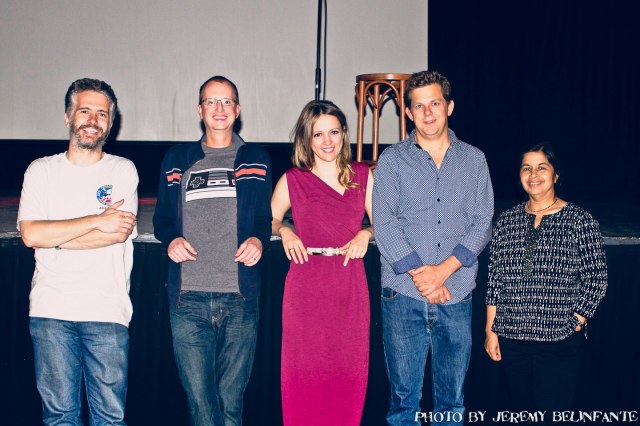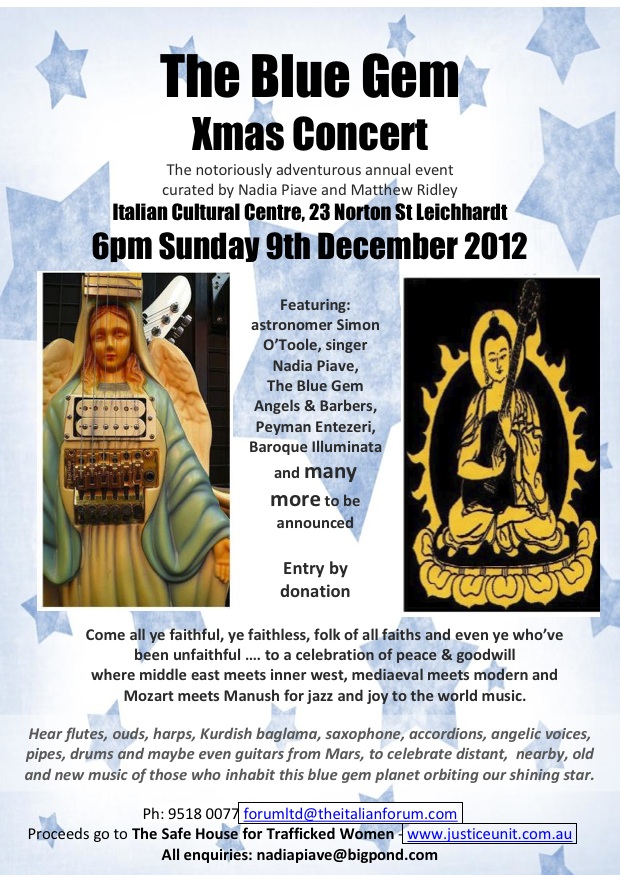There has been an ongoing discussion about how to improve scientific literacy in the broader community. In part this is in response to the attack on science in recent years, over things such as climate science, genetically modified food, nanotechnology, vaccination and other apparently controversial topics. To address the widening gap in the public’s appreciation and understanding of science, some have said that we need to have better (or more) science communication. Others say we need more scientists in parliament and part of other key decision-making bodies. I’m not so sure.
The number of scientists in politics has always been traditionally low. That’s in part because people trained as scientists typically end up working in research and development, education or IT (and occasionally in finance, but that’s another story). I’m not convinced that increasing the number of politicians with science degrees would make much of a difference.
What is really needed are politicians who appreciate and understand the scientific process; they don’t necessarily have to be scientists themselves. Sadly, just because you have a science degree, doesn’t mean you have these attributes. You only have to look at some of the climate change deniers out there to see that. Or creationists or intelligent design proponents for that matter.
Two great examples of politicians with an appreciation for science are Senator Kim Carr, the former Australian science minister and Adam Bandt, the MP for Melbourne; I’m sure there are others. Neither of these politicians have scientific training that I’m aware of.
I once heard a story about Kim Carr during the Square Kilometre Array bidding process. There was a two day workshop held in Perth during the preparation of the Australian bid for the telescope. Kim Carr – as science minister – was invited to give an address. Apparently he gave the address and stayed around for the rest of the day. The story goes that he came back the next day for the technical discussion. That’s remarkable.
Adam Bandt is a great supporter of science. He recently hosted a public forum called “Why Science Matters“, which brought together a group of scientists to discuss why science is important for Australia’s future. He has also take on a scientist (Dr Krystal Evans) as an intern for a few months.
Not at all politicians are this passionate about science obviously (some might say “enlightened”), but it’s certainly not all doom and gloom. What does seem to be true is that the “anti-science” brigade are louder and arguably more organised, especially in countries like the United States. On the political front then, I agree with those who say that scientists should be more organised, although there are great efforts made by professional societies and groups such as Science Technology Australia.
Now to science communication. Science communicators are generally pretty damn good, and they’re not all journalists. There are stacks of passionate and wonderful scientists out there busily communicating their work and commenting on the work of others to the general public. You can learn a lot by: following them on Twitter; listening to them on the radio; watching them on TV; going to various public forums to hear them; and so on and so forth. They inform and inspire.
The bigger problem in science communication is not the quality of the people doing the communicating or their subject matter; to me, it’s their relative isolation from the broader community. People are interested in science, but many feel that science is not accessible, or they don’t know where to look. In Australia, if you don’t watch or listen to the ABC, or maybe SBS, then chances are you don’t have access to many scientists.
If you read a tabloid newspaper, you have more chance of reading a science story in the “Strange but true” section of the paper than in the news. This has been referred to as “banishing science to the fast food news ghetto” by Lyndal Byford of the Australian Science Media Centre. I’ll look at the issues surrounding science journalism in a future post, but it’s definitely true that when it comes to major daily newspapers, the quality of science reporting is declining.
As an aside: the regular use of the word “boffin” by the mainstream media makes me feel like they believe scientists are from another world. I hate “boffin” with a passion, and I certainly don’t identify myself as one.
Another big problem is the growing gap between the details of cutting-edge science and whether the community feels they can understand them, whether they’re appreciative of science or not. The Universe is a complex place, and it’s up to scientists to make it comprehensible for everyone. At the very least, science should feel more accessible than I think it does, and the public should feel they can trust scientists and the scientific process. This comes down, at least in part, to science literacy, but there’s more to it than that. Another topic for future post.
Of course, there are also (sadly) people out there with an anti-science agenda, and they are loud, obnoxious and often powerful. Many of them are scientists or science literate, which makes things more confusing for those that aren’t.
So do we need to improve science literacy? Well, yes, but I’m not convinced that this is the biggest problem science faces in modern society, and I’m not alone here. The folk at the Australian National Centre for the Public Awareness of Science at ANU are working on ways to better understand what’s really going on. They’re making a documentary about the communication of science in complex situations, and have followed climate scientists on a listening tour of rural and regional Australia. I’m looking forward to watching and learning.
Science literacy is a major issue that needs to be addressed though. There is no magic solution, but I do believe that we lay do the ground work to improve the situation as much as possible. Education is key, but I don’t mean shoving more facts and figures down peoples’ throats; I’m talking about understanding how science works.
First, we need to distinguish what science is and what it is not. Science is not a set of opinions based on gut feelings, political ideology, or personal interest. Science is based on evidence, derived from observations or controlled experiments. Science produces theories that make predictions, which can be tested by further observations or experiments. Hunches and ideology do none of these things. I’m all for scientific debate, but only when it’s actually scientific.
Any balanced debate about scientific issues need to be based on all the evidence, not just cherry-picked snippets. We need to consider causal relationships and not simply correlations. And finally – and this is something that I will almost certainly rant about in the future – we need to understand or at least appreciate the statistics involved in the results.
Next, you need to determine who is qualified to comment. I was heartened to read this wonderful article on the value of an opinion; it’s one of the most read ever on The Conversation. You cannot simply state an opinion on science-related matters without backing it up with evidence. Opinions here are not all equal. If, for example, over 95% of all scientists accept human-induced climate change is a reality, and 100% of climate scientists do, then this is pretty good indication that it is a reality. Have a look at who sponsors and supports the scientists who don’t accept this consensus, and you’ll find an undercurrent of ideology and personal interest. Scientists are human and suffer the same flaws as everyone else. In short, go with the consensus view.
And finally, we need to improve science education. In the West, science is still seen as something for people with no social skills, nerds in lab coats. We need to change this, to move science out of the “geek ghetto“. This has to start with our education system. Science and scientists are too often painted as somehow separate to society, even in the classroom. It’s more than just a question of getting the curriculum right, it’s about how you teach science as well. Science is hard, but it needs to be seen as worth the effort.
Student interactions with working scientists can help here. I’d like to think that programs like I’m a Scientist, Get me out of here! and Scientists in Schools play a significant role. One of the expectations of the students in the most recent I’m a Scientist competition was that the scientists would all be awkward and anti-social. Needless to say, I think the students were all pleasantly surprised.
Societal issues like this cannot be changed overnight. I really think that most people are generally interested in science and are open to hearing about it. There’s a lot of work to do.



